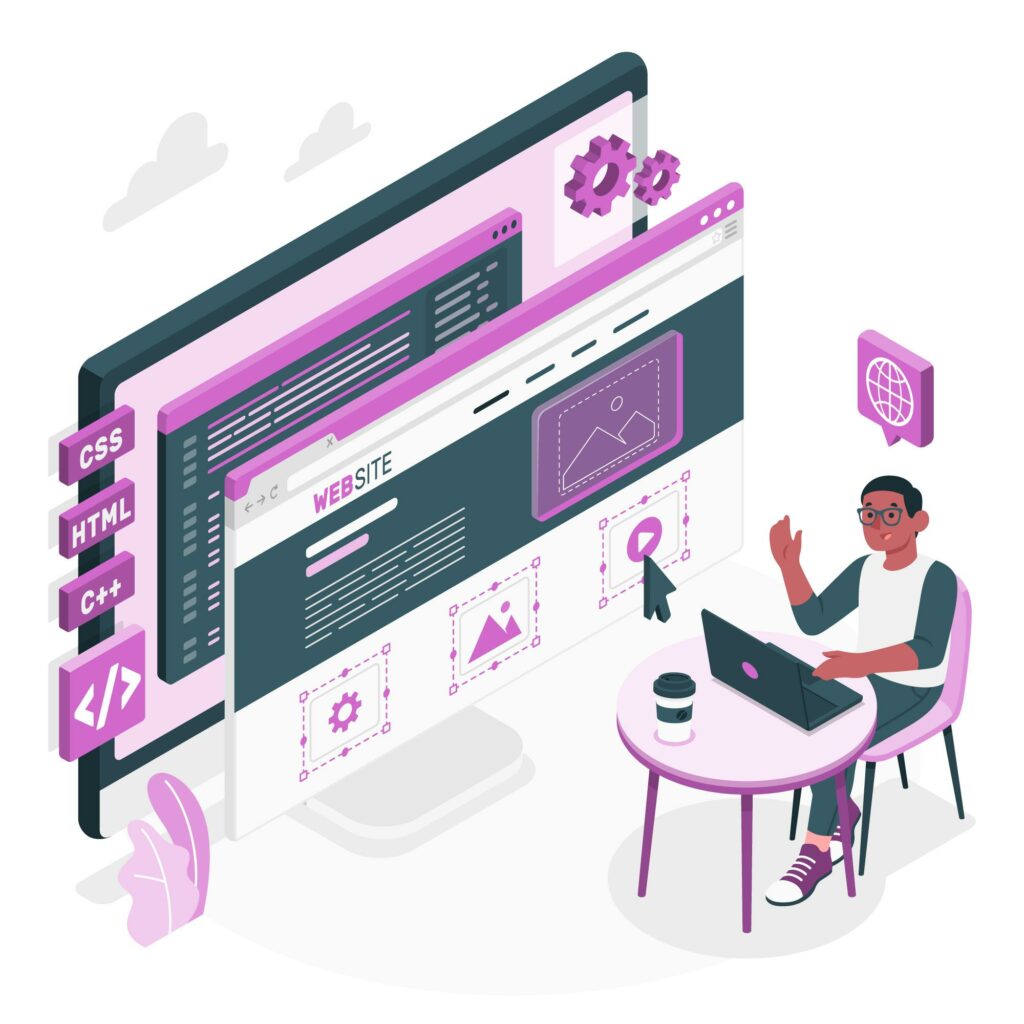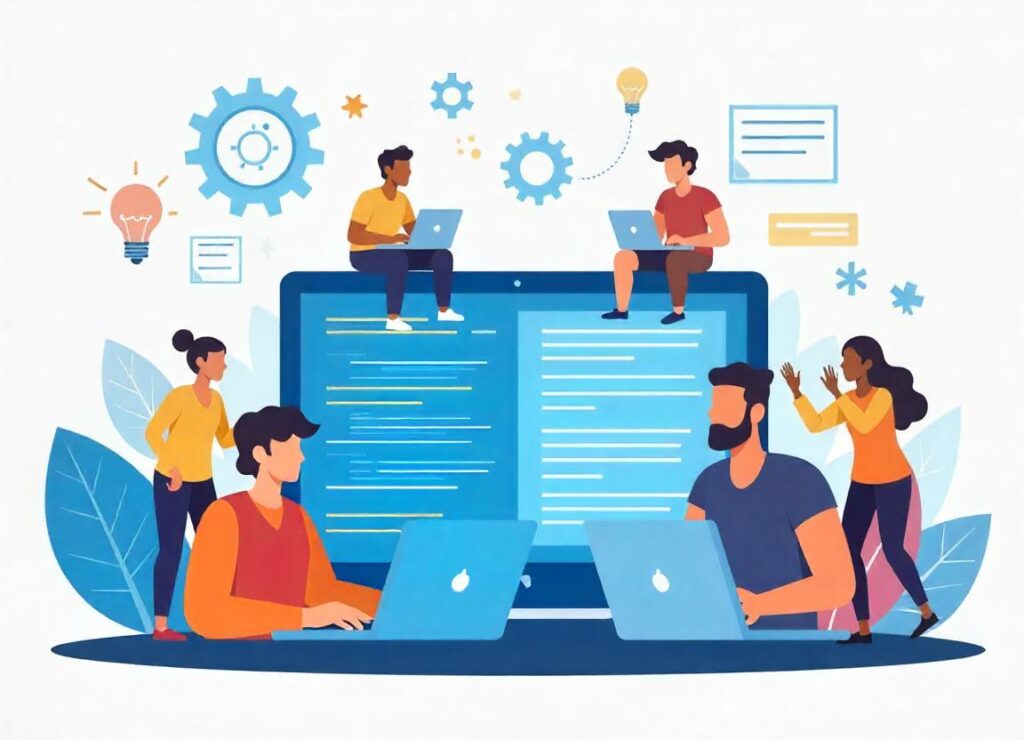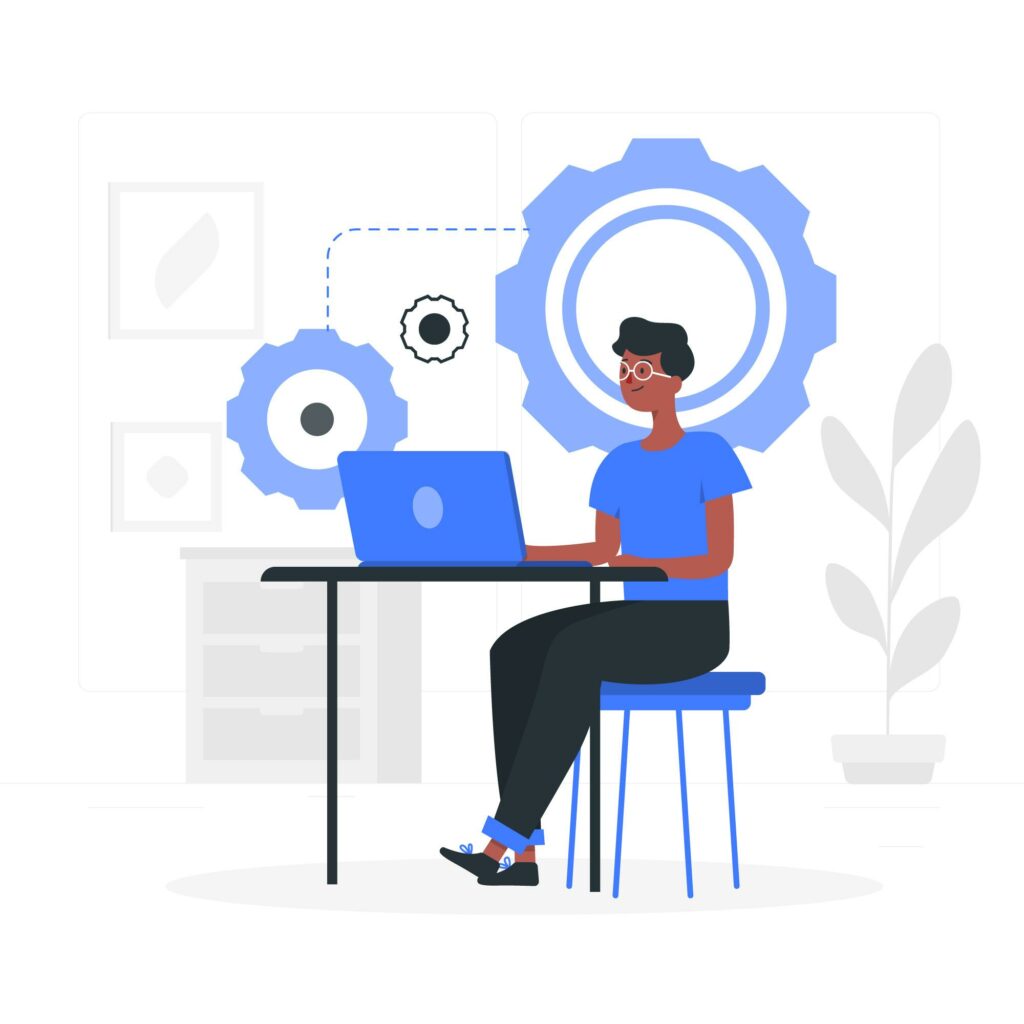Technical Skills Required For Web Designer

1. HTML (HyperText Markup Language)
HTML serves as the backbone of web page creation, organizing content through elements and tags to define headings, paragraphs, links, images, and various other content types. Proficiency in HTML is essential for web designers as it enables them to build and adjust the fundamental structure of a webpage.
Even when using tools like content management systems (CMS) or visual editors, a solid grasp of HTML is crucial for resolving issues and customizing layouts. Advanced knowledge of HTML includes understanding semantic HTML, which enhances accessibility and SEO by using meaningful tags that provide clear information to browsers and users alike.
2. CSS (Cascading Style Sheets)
CSS complements HTML by managing the visual presentation of web pages. It enables designers to style elements with colors, fonts, spacing, and layout modifications. Mastery of CSS is vital for creating responsive designs that seamlessly adjust to different devices and screen sizes.
Designers should understand concepts like the box model, flexbox, grid layouts, and media queries to effectively apply responsive design principles. Advanced CSS capabilities include animations and transitions, which add interactivity and elevate user engagement.
3. JavaScript
JavaScript is a programming language used to bring interactivity to websites. It powers dynamic features such as content updates, animations, form validations, and interactive elements like sliders and pop-ups. A solid understanding of JavaScript enhances a designer’s ability to deliver immersive user experiences by enabling client-side scripting that reacts to user interactions without requiring page reloads.
While in-depth programming expertise isn’t essential for all designers, familiarity with JavaScript frameworks (e.g., React or Vue.js) can significantly boost their professional appeal.
4. User Interface (UI) and User Experience (UX) Design
UI design focuses on the visual components users interact with on a website, such as buttons, icons, and layout structures, while UX design centers on the overall experience users have while navigating the site. Proficiency in these areas involves developing wireframes and prototypes that align with user needs and behaviors, all while adhering to accessibility standards.
Key aspects include understanding user personas, conducting usability tests, and implementing information architecture principles to create intuitive and engaging designs.
5. Responsive Design
Responsive design ensures that websites perform optimally on a range of devices and screen sizes by employing adaptable layouts, images, and CSS media queries. This skill is essential in a mobile-first world where users access websites on smartphones, tablets, and desktops.
Designers need to excel in crafting fluid grids that dynamically adjust to varying screen dimensions, maintaining both usability and visual appeal.
6. Web Server Management
Web server management entails the setup, configuration, and maintenance of web servers that host websites. This skill is crucial for ensuring site accessibility and optimizing performance. Familiarity with server-side technologies, such as Apache or Nginx, equips designers to troubleshoot server configuration issues efficiently and maintain reliable hosting environments.
7. Graphic Design Tools
Expertise in graphic design tools like Adobe Photoshop, Illustrator, Figma, or Sketch is crucial for producing high-quality visuals for web projects. These tools empower designers to create graphics, prototypes, mockups, and edit images that effectively convey design concepts. A strong grasp of design fundamentals, including composition, color theory, typography, and branding, is essential when working with these tools.
8. Search Engine Optimization (SEO)
SEO focuses on optimizing websites to achieve higher rankings on search engine results pages (SERPs). Understanding SEO principles enables designers to build websites that are not only aesthetically pleasing but also optimized for visibility online. This includes using proper HTML tags like title tags and meta descriptions, optimizing images for quick load times, ensuring mobile responsiveness, and adhering to best practices for site architecture.
9. Content Management Systems (CMS)
Knowledge of CMS platforms like WordPress or Joomla simplifies the design process, allowing designers to efficiently manage content without extensive coding expertise. Familiarity with these systems helps designers customize themes and templates while ensuring compatibility with plugins that enhance site functionality.
10. Basic Programming Knowledge
While not always a prerequisite, basic understanding of back-end programming languages such as PHP or Python can be advantageous for web designers. This knowledge facilitates an understanding of how front-end elements interact with back-end processes and databases, enabling designers to create more cohesive and integrated web solutions.
Soft Skills

1. Communication Skills
Strong communication is essential for collaborating with clients and team members throughout the design process. Designers must clearly articulate their ideas and ensure that design concepts are understood by all stakeholders. Effective communication fosters collaboration and helps manage expectations efficiently.
2. Time Management
Web designers often work within strict deadlines, making time management crucial. The ability to prioritize tasks ensures that projects are completed on time without sacrificing quality. Staying organized allows designers to handle multiple projects simultaneously while meeting deadlines.
3. Problem-Solving Skills
Web design frequently involves addressing technical issues and user experience challenges. Creative problem-solving is vital for identifying and implementing solutions that improve usability while staying within project constraints.
4. Attention to Detail
A meticulous approach ensures designs are polished and error-free before launch. This includes checking elements like alignment, color consistency, typography, and layout integrity. Attention to detail demonstrates professionalism and enhances the quality of the final product.
5. Teamwork
Collaboration with developers, marketers, content creators, and stakeholders is a regular part of web design. Strong teamwork skills promote harmonious interactions and encourage the exchange of creative ideas, leading to successful project outcomes.
6. Research Skills
Conducting research to understand user needs and industry trends helps designers craft designs that resonate with their target audience. Staying informed about emerging technologies and best practices enables designers to innovate and adapt to changing user expectations.
By cultivating these soft skills alongside technical expertise, web designers can significantly enhance their effectiveness and competitiveness in the field. This comprehensive skill set prepares them to tackle diverse challenges and positions them as valuable assets within any digital team or organization.
Strategies for Balancing Technical and Soft Skills

1. Continuous Learning
To stay competitive, web designers should prioritize ongoing education:
- Online Courses: Utilize platforms like Coursera, Udemy, or LinkedIn Learning to enhance technical skills (e.g., HTML, CSS, JavaScript, and design tools) and soft skills (e.g., communication, teamwork, and leadership). Many courses offer certifications that can bolster your resume.
- Workshops and Seminars: Attend events focusing on the latest web design technologies and trends. These sessions often combine technical topics (like new frameworks) with soft skill development (e.g., conflict resolution or negotiation).
2. Practical Application
Hands-on experience is key to mastering both technical and soft skills:
- Projects: Work on real-world projects to practice technical abilities (coding and design) while improving collaboration and communication. Participating in open-source projects or personal challenges can develop both areas.
- Internships or Freelancing: Gain experience through internships or freelance opportunities that demand both technical output and client relationship management. These roles also help build a robust portfolio showcasing your versatility.
3. Networking
Building professional relationships enhances learning and skill growth:
- Join Professional Groups: Participate in online communities or attend local meetups and conferences. Networking provides exposure to diverse perspectives and fosters better communication skills.
- Mentorship Programs: Find mentors who can guide your technical growth while offering insights on teamwork and collaboration. Their feedback can help refine your soft skills.
4. Feedback Mechanisms
Constructive feedback drives improvement:
- Peer Reviews: Engage in peer reviews to exchange insights on technical work and project management processes. This practice encourages continuous improvement.
- Client Feedback: Request feedback from clients post-project to understand how well you delivered technically and communicated throughout the process. This helps refine both technical deliverables and interpersonal interactions.
5. Time Management Techniques
Effective time management supports balanced skill development:
- Prioritize Tasks: Use tools like the Eisenhower Matrix or Kanban boards to manage tasks efficiently. This ensures you dedicate time to both technical responsibilities (e.g., coding) and soft skill enhancement (e.g., team collaboration).
- Set Goals: Define clear goals for improving technical competencies (e.g., learning a new programming language) and soft skills (e.g., mastering presentation techniques). Regularly review progress toward these objectives.
6. Reflective Practice
Regular self-reflection consolidates learning and identifies growth areas:
- Self-Evaluation: After projects, analyze your technical performance and assess how well you collaborated or communicated. Pinpoint areas for improvement.
- Journaling: Maintain a journal to document progress in both skill sets, including challenges faced and strategies used to address them. Reflecting on these experiences reinforces learning and highlights trends in your development.
Balancing technical and soft skills involves more than acquiring knowledge—it’s about applying it effectively in practical scenarios. By committing to continuous learning, gaining hands-on experience, networking, leveraging feedback, managing time effectively, and reflecting on experiences, web designers can develop a comprehensive skill set.
This holistic approach ensures they remain competitive in a dynamic industry while fostering positive relationships with colleagues and clients. The integration of technical expertise and interpersonal skills positions designers as invaluable contributors to any organization.
[Want to learn more about about the Skills Required For Web Designer? Click here to reach us.]
Conclusion
Becoming a successful web designer requires a blend of technical expertise and soft skills. Mastering tools and techniques like HTML, CSS, UI/UX design, responsive layouts, and SEO ensures the ability to create visually appealing and functional websites. Equally important are soft skills such as communication, time management, problem-solving, and teamwork, which facilitate collaboration and project success.
For those looking to streamline their web development projects, Bobcares offers comprehensive web development support services. From troubleshooting issues to optimizing performance, their expert assistance ensures your websites remain efficient, user-friendly, and aligned with industry standards. By combining these skills with reliable support services like those from Bobcares, web designers can enhance their productivity and deliver exceptional results in an ever-evolving digital landscape.







0 Comments